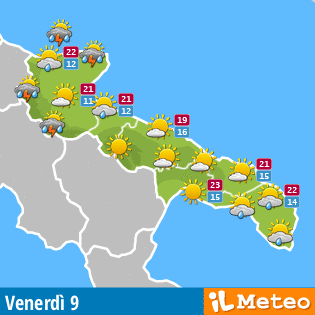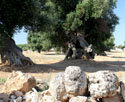Santa Cesarea Terme
Info S. Cesarea Terme
-
Region:
Provincie:
Municipality:
CAP:
Area code:
Surface:
Population:
city hall:
-
Apulia
Lecce
Santa Cesarea Terme
73020
0836
26,82 Kmq
3.021
Via Roma 159
Santa Cesarea Terme, an ancient thermal place
It is a famous thermal place developed in the 1920s but it was already known in antiquity thanks to the presence of sulphureous thermal waters. They gush out of four caves (Gattulla, Solfatara, Fetida, Sulfurea). According to the myth these sources are linked with the birth of four Leuterni giants, killed by Hercules with strokes of club. Another legend says that their origin is linked with the story of a young girl called Cesaria, who was swallowed by the mountain to escape from her father’s persecution.
The town appears as anchored to the rocks, sheer to the sea, and, thanks to its thermal baths, it became an important holiday resort. Between the end of the 19th century and the beginning of the 20th century many patrician families built numerous villas for their holidays: some of them show a beautiful Moresque style.
It is worth mentioning the Moresque Villa Sticchi, built between 1894 and 1900; it has a square plan and a wonderful arcade in Arabian style and it shows an elegant dome with geometrical decorations according to the Moresque style. In the middle of the town, where only 3000 people live, there is the Sacro Cuore church, rebuilt in 1954 on a 14th - century chapel, where, according to the tradition, the virgin Cesaria died.











